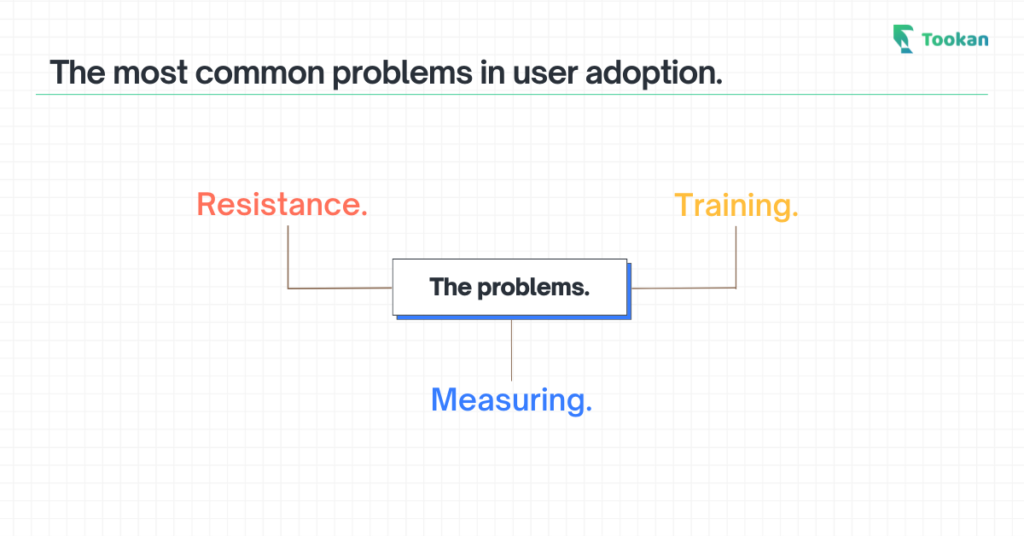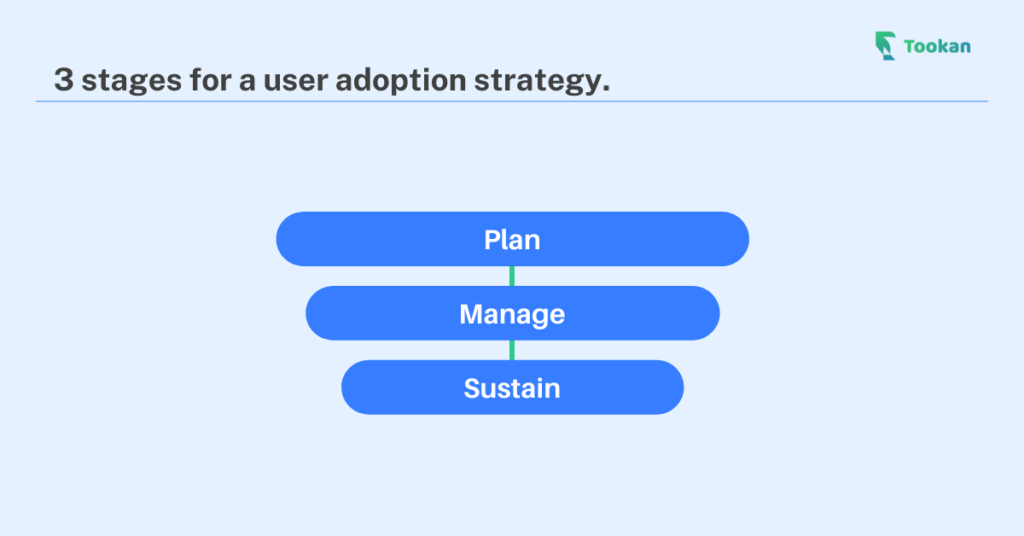
Understanding user adoption strategy for tech enablement. A statement that has been a part of torment for decision-makers as they attempt to bring a change and upgrade the tools in their team’s arsenal.
In today’s time, businesses are investing heavily in all sorts of productivity and automation tools. According to Statista, IT spending on enterprise software is expected to amount to around $US 675 billion worldwide in 2022. This shows a growth of 11 percent from the previous year.
Before getting into the most significant challenges faced and the user adoption strategies, let’s understand what user adoption means.
What is user adoption?
In the simplest terms, user adoption is the process through which businesses acclimatize new users to their software and ensure recurring usage.
User adoption involves setting up and showcasing the value to be derived from adopting a new software vis a vis existing software/methods.
Biggest challenges faced in a user adoption strategy

Let’s look at 3 very common problems faced during user adoption.
1. Resistance to change
This is the most common problem faced when it comes to user adoption. Users are set in their preexisting methods and seldom want to switch. This is because it requires spending time getting used to and learning new technology.
2. Training
Training is a problem usually observed in larger workforces. Since multiple people have to be trained in a rather short period of time. Since training users involves building an understanding of the product and also needs to be given some time to adapt, it is a fear of many that there could be a negative short-term impact.
3. Measuring user adoption
Another common problem faced during user adoption. This usually comes in at a later stage when the technology has been implemented already. Key stakeholders face a challenge in measuring the success of their strategy due to a lack of planning tangible measures at an earlier stage of developing a strategy.
Let’s try and understand how we can tackle these challenges throughout various stages of your user adoption process.
User adoption strategies
To understand user adoption strategies, we’ve gone ahead and broken them down into three main stages; Plan, manage, and sustain. While stakeholders look toward creating an impactful user adoption strategy, these 3 key touch points stand out to ensure efforts have a long-lasting impact and aren’t treated as a one-off instance.

Let’s take a look at the three stages and what each one brings to the table.
Stage 1 – Plan
First and foremost, businesses and stakeholders must plan and prepare themselves to set clear expectations in terms of what they expect from their team along with the value that the software will bring to the table. The planning stage has 3 distinct steps that should be a part of your decision-making process and user adoption strategy.
Validate
The first factor to comprehend while working on user adoption is figuring out the need for innovation for your business. On the precipice, it might seem like a promising and necessary addition to your business. Still, in reality, stakeholders must deep dive and validate the real question: Is this software actually bringing value to my team?
Test
Once you have validated the need for software for your business, comes the second step. Testing the platform. Every business is unique in its own way of working. This breeds the need to thoroughly test all touch points before implementing new technology, as it has to cover all criticalities relevant to your business.
Emphasize
This is perhaps the most important step throughout any user adoption process. Emphasize the value this change will bring to your team. User adoption is a direct function of human psychology, and it is crucial to show people the value that a change can bring in order to drive user adoption.
Stage 2 – Manage
The second stage sheds light on the implementation and migration, essentially the complete transition to the new software. This is the most critical stage in the entire user adoption journey.
Training
Simply introducing new software is not enough. Users have to be trained and patiently guided through the process of smoothly transferring their operations to a new system.
Feedback
The benefits of feedback can create value and improve resolution like no other medium. Make sure to follow up with your users frequently. Feedback helps identify gaps in your user adoption strategy while building trust. Users are allowed to provide honest feedback and gives a belief that they are making an impact in the organisation.
Stage 3 – Sustain
The homework on the new software has been done. The testing and validation is completed. The third stage of a user adoption strategy focuses on the long-term sustainability in this pivot to this new software.
Regular audits
Auditing is a critical process in terms of the sustainability of your user adoption strategy. It keeps the users alert in terms of making sure that all the necessary steps are being taken to continue the usage of the platform. Also, it acts as a source of insights for the management to understand any issues or pain points that might come up.
Create success stories
By creating success stories and recognizing team members, there are 2 things that add value to your team. First thing is, that it creates motivation and adds an extra incentive for others to step up and increase their game. The second thing is, that it showcases to the employees that the management is keeping an eye on the activities going on. As a result, ensuring alertness to take necessary action which helps in maintaining the end goal of the user adoption strategy.
Conclusion
At the end of the day, user adoption is heavily influenced by human nature. As it is commonly observed, people tend to prefer methods to which they are accustomed as compared to changing and adopting newer technologies. The most critical form of motivation to switch comes only once they are shown the true value and benefit of changing. We have touched upon some common problems faced, along with some tips on what to keep in mind while drafting user adoption strategies.
The most important thing is to show value to the end user. To ignite true user adoption, it is imperative to make the end user understand what value addition is coming to the table. As long as all your action points revolve around this one true purpose, your user adoption strategy is bound to succeed.
Subscribe to stay ahead with the latest updates and entrepreneurial insights!

Subscribe to our newsletter
Get access to the latest industry & product insights.



















